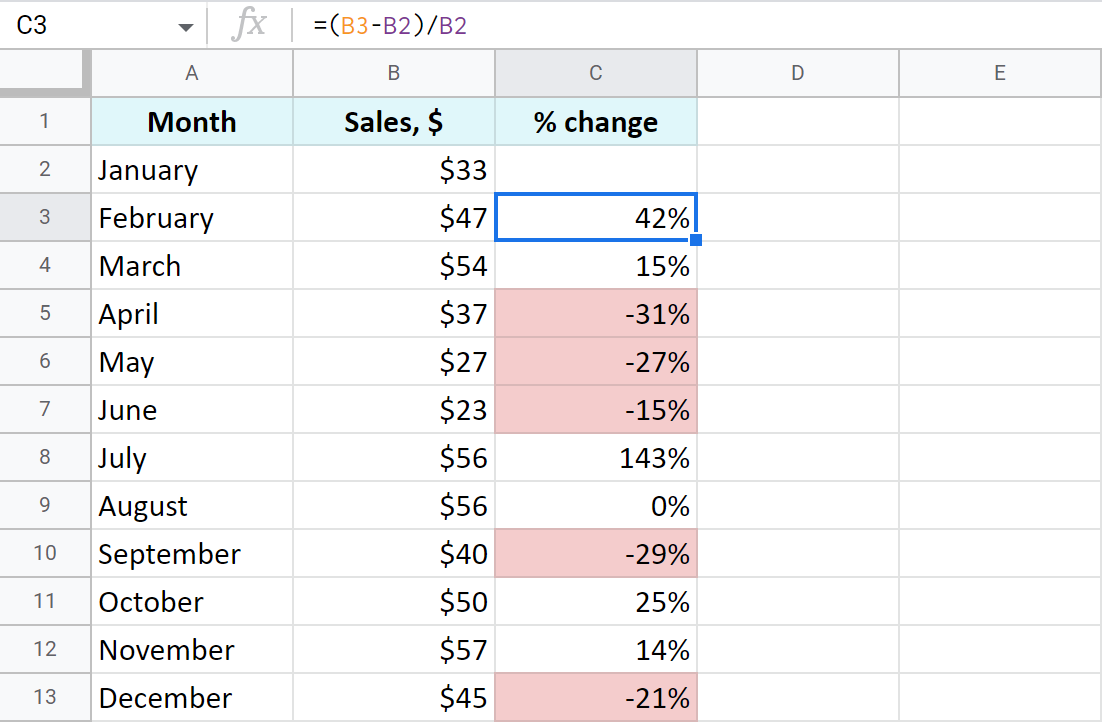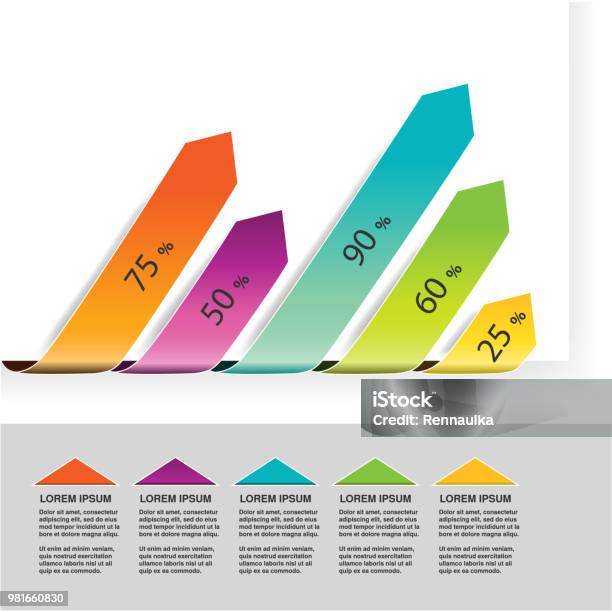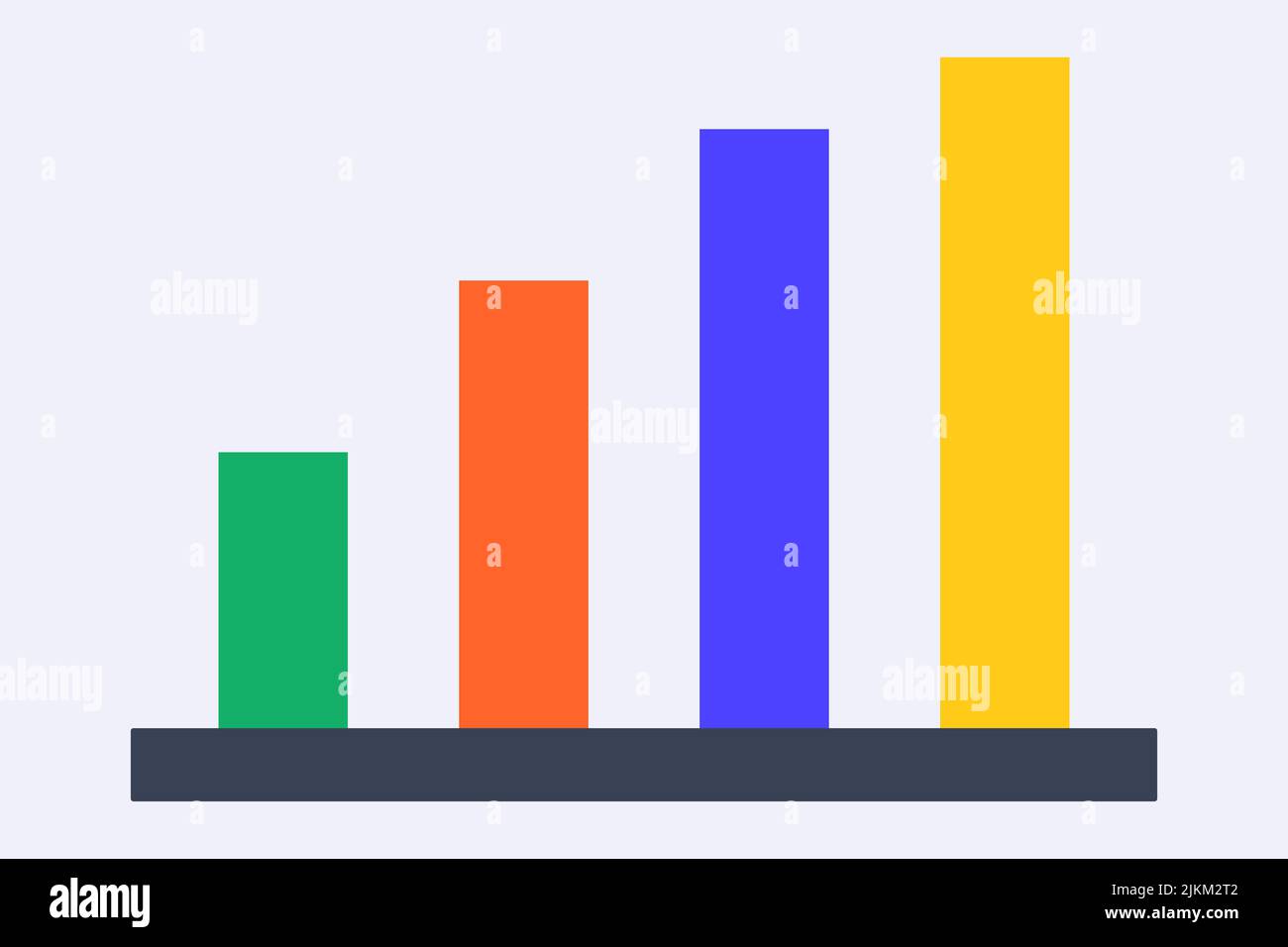Visualize Percentages with Colorful Bars

Welcome to an insightful exploration of an essential tool for data visualization and communication: the color-coded bar chart. This powerful visual aid is a staple in the world of data presentation, offering a simple yet effective way to convey complex information. Let's delve into its capabilities, applications, and the art of crafting compelling visual narratives.
The Power of Color-Coded Bar Charts

Color-coded bar charts are more than just a pretty picture; they are a strategic tool for presenting data in a way that is both intuitive and engaging. By assigning distinct colors to different data categories, these charts provide an instant visual cue that helps viewers quickly grasp the relationships and patterns within the data. This technique is particularly effective when dealing with a wide range of values or when comparing multiple datasets.
Enhancing Data Interpretation
Imagine a scenario where you are analyzing the sales performance of various product categories over a year. A color-coded bar chart can vividly illustrate the peaks and troughs, making it easy to identify the top-performing categories and the periods of highest and lowest sales. The use of color adds a layer of clarity, ensuring that the story the data tells is both accurate and memorable.
Moreover, color-coding can be a powerful tool for emphasizing key insights. For instance, if a particular category consistently outperforms others, a distinct shade can highlight its significance, drawing the viewer's attention to this crucial piece of information.
Effective Communication
Effective data communication is about more than just presenting numbers; it’s about storytelling. Color-coded bar charts excel at this, providing a narrative structure to your data. By arranging data points chronologically or categorically and assigning meaningful colors, you can guide viewers through a logical flow of information. This narrative approach not only enhances understanding but also makes your data presentation more engaging and shareable.
Mastering the Art of Color Selection

The choice of colors in a bar chart is a critical decision that can significantly impact the effectiveness of your visualization. Here’s a deeper look into the art and science of color selection.
Color Theory for Data Visualization
Color theory is a fundamental aspect of visual design, and its principles are especially relevant when creating color-coded bar charts. Understanding color harmony, contrast, and the psychological impact of different hues is essential. For instance, warm colors like reds and oranges often evoke energy and passion, while cool colors like blues and greens can suggest calmness and stability. This knowledge can be strategically applied to emphasize specific data points or themes.
The Role of Color Schemes
Color schemes, or palettes, are sets of colors that work well together. In data visualization, it’s crucial to select a palette that provides clear differentiation between data categories while maintaining visual appeal. Monochromatic schemes, which use different shades of a single color, can be elegant and easy to interpret. On the other hand, complementary color schemes, which use colors opposite each other on the color wheel, offer high contrast and can be particularly effective for highlighting important data.
Best Practices for Color Coding
When color-coding your bar chart, consistency is key. Ensure that the same color always represents the same category across your visualizations. This helps viewers develop a mental association, making it easier for them to interpret your charts. Additionally, consider the accessibility of your color choices. For instance, avoid using color combinations that might be difficult for color-blind individuals to distinguish.
Real-World Applications and Case Studies
Color-coded bar charts find application in a myriad of fields, from business and finance to science and education. Let’s explore some practical examples.
Business Analytics
In the realm of business analytics, color-coded bar charts are invaluable for tracking sales performance, market share, and customer demographics. For instance, a retail company might use these charts to visualize sales trends over time, with different colors representing different product lines. This visual representation can quickly reveal which products are performing well and which might need strategic adjustments.
Healthcare and Epidemiology
Color-coded bar charts play a crucial role in healthcare and epidemiology, particularly in visualizing trends and patterns in disease outbreaks or patient demographics. Consider a healthcare organization tracking the spread of a particular disease over different age groups. Each age group could be assigned a distinct color, providing a clear visual representation of the disease’s impact across demographics.
Education and Learning
Educators often utilize color-coded bar charts to illustrate student performance, assessment results, or progress over time. For instance, a school might create a bar chart to compare the average test scores of different classes, with each class represented by a unique color. This visual tool not only helps teachers identify areas of improvement but also serves as a powerful motivator for students.
Future Trends and Innovations
As data visualization continues to evolve, we can expect exciting developments in the realm of color-coded bar charts. Here’s a glimpse into the future.
Interactive Charts
The trend towards interactivity in data visualization is set to continue, with color-coded bar charts likely to play a significant role. Interactive charts can allow users to delve deeper into the data, providing additional context and insights. For example, clicking on a bar might reveal more detailed information about that data point, such as a breakdown of its components or related trends.
AI-Assisted Color Selection
Artificial Intelligence (AI) is increasingly being used to enhance data visualization. In the future, AI algorithms could be employed to automatically suggest color schemes based on the data’s characteristics and the intended message. This could greatly streamline the process of creating effective visualizations, ensuring that the chosen colors are both aesthetically pleasing and functionally effective.
Augmented and Virtual Reality
With the advancement of Augmented Reality (AR) and Virtual Reality (VR) technologies, we can expect to see color-coded bar charts take on new dimensions. Imagine being able to step into a virtual data visualization, where you can interact with and explore the data in a fully immersive environment. This could revolutionize how we engage with and understand complex datasets.
Conclusion: The Enduring Power of Visuals

In a world increasingly driven by data, the ability to effectively visualize and communicate information is more critical than ever. Color-coded bar charts are a testament to the enduring power of visuals in simplifying complex data narratives. By harnessing the strategic use of color, these charts offer a compelling and intuitive way to present data, ensuring that insights are not just seen but truly understood.
As we continue to explore the frontiers of data visualization, the color-coded bar chart remains a fundamental tool, constantly evolving and adapting to meet the needs of a data-driven society.
How can I choose the right color scheme for my bar chart?
+Selecting a color scheme is a critical decision. Consider the nature of your data and the message you want to convey. Monochromatic schemes can be elegant and easy to interpret, while complementary colors offer high contrast. Tools like ColorBrewer can also help you choose an effective color palette.
Are there any best practices for using color in data visualization?
+Yes, consistency is key. Ensure the same color represents the same data category throughout your visualizations. Also, consider accessibility, avoiding color combinations that might be difficult for color-blind individuals to distinguish.
What are some common mistakes to avoid when using color-coded bar charts?
+Avoid using too many colors, as this can make your chart confusing. Also, be cautious of over-emphasizing certain data points with overly bright or saturated colors. Strive for a balance that highlights important data without overwhelming the viewer.



